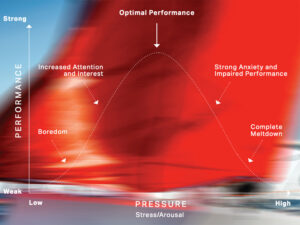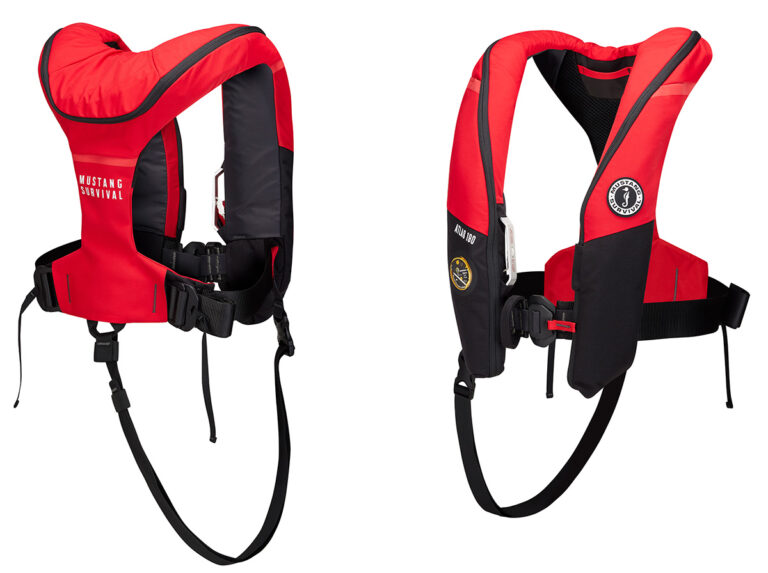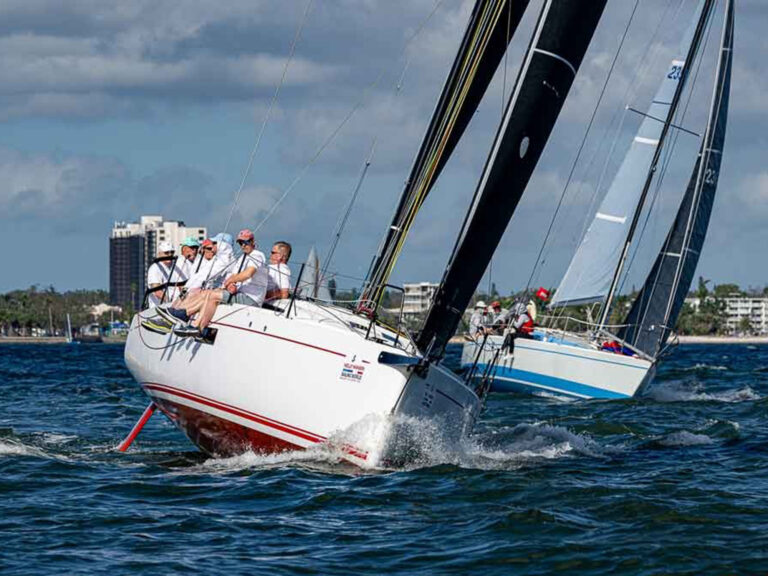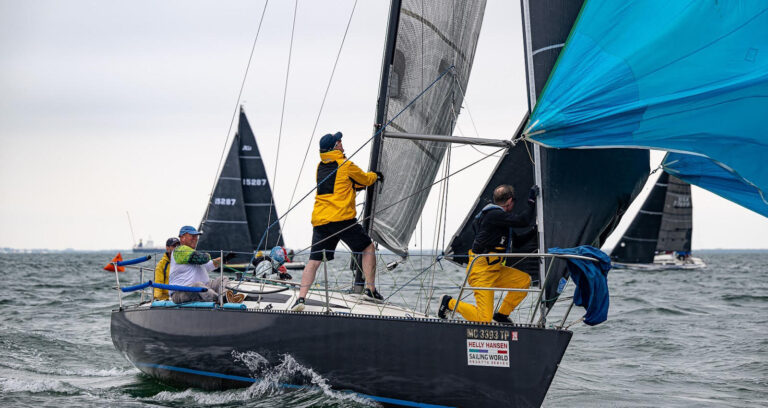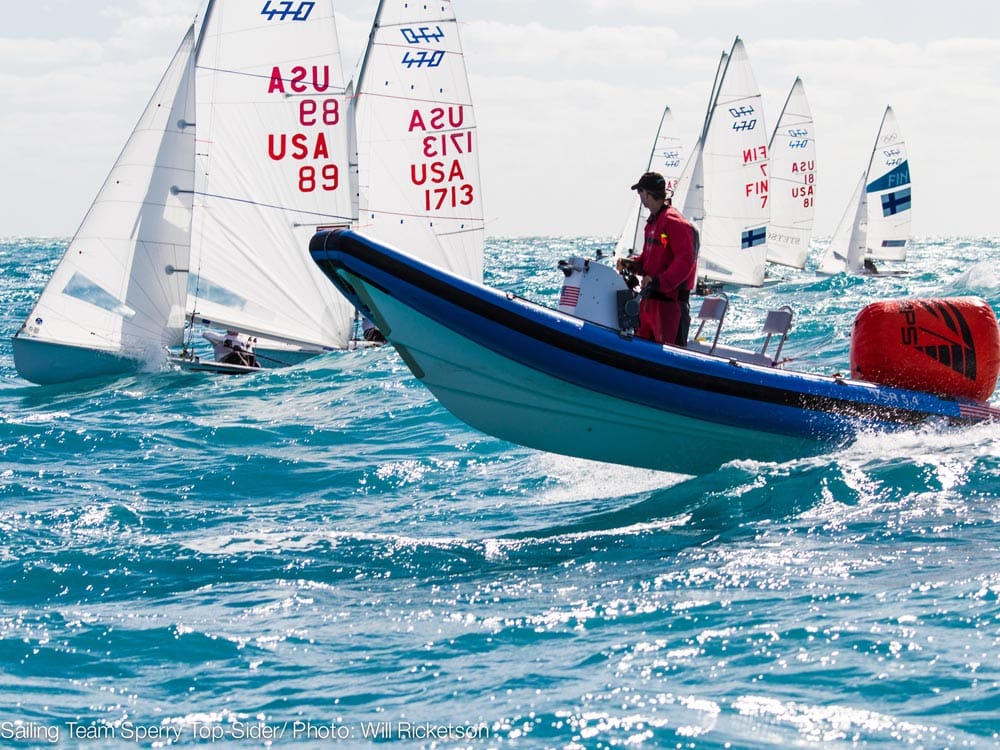
The Shrinking Course
I set up a course that gradually shrinks, which sharpens tacking and jibing skills, as well as windward and leeward mark rounding skills. It’s used for just one boat at a time. Set up a starting line and a weather mark, usually about a quarter mile apart, depending on the class.
The rules are, a minimum of three tacks, minimum of three jibes. The key is not to get ragged. You have to do jibes and tacks like you’re actually racing, not just forcing them. Once they’re not smooth anymore, then we wouldn’t consider them successful tacks or jibes. They also have to get up to full speed at the end of each tack — no double tacks. If they can do six tacks and six jibes, great, but they all have to be smooth.
Then I slowly move the weather mark toward the starting line, making a game out of it until at some point, they can’t complete three tacks or three jibes. In the 470, we could often get down to 100 yards. Jibes are more difficult to get in, especially when it’s windy. You’re going so fast that if the set isn’t perfect and the takedown isn’t perfect, you’ve used up most of your distance. Do this for an hour or two, one lap at a time, rounding the leeward mark as if it was a mark in the course. The next day I’d say, “OK, we did this yesterday. Can you do this in less distance than you did yesterday?”
Holding position on the starting line
This drill teaches how to hold position on the starting line. For 2 minutes the boat has to stay within two boatlengths of a mark, directly below it. It must stay within that quadrant, always to leeward. It emphasizes using tacks, boathandling, rolling, backing the jib—all the things you need to do to stay in position. They would be told whether this was the pin end or the boat end, or somewhere else on the line, and at the end of 2 minutes, they start as if the mark were that part of the line.
This is much easier in boats like 49ers and 49erFXs, where you have full-battened mains. Those boats can stay really stay still, and you can crab and go sideways. A boat like a 470 is more difficult because the boat doesn’t want to sit. To hold position, you have to work really hard—roll the boat, tack, or scull. We do the same drill in in J/24s, Melges 24s, and J/70s. Heavier boats, such as Etchells, are a little tougher because they keep their momentum so easily. The distance from the mark really depends on how long it takes the boat to accelerate. In an Etchells, the stationary position might be 4 to 5 boatlengths below the line because it takes that long to accelerate. On the other hand, a 470 it takes a half boat length to accelerate in any breeze, so two boatlengths is not a problem. In J/70s in 10 to 12 knots of wind, we do two boatlengths. Same drill. When it’s windier, it gets more difficult to hold position.
You’ll know the drill is going well if you can stay within two boatlengths dead to leeward of the mark. If you get off to the sides too far, then the exercise is not going well. In the last 20 seconds, you shouldn’t be on port tack. You want to be on starboard, in a position that if someone is coming in on starboard, you’re the leeward boat and still in control. Then, when the 2 minutes expires, be at close to full speed and on the line. You don’t have to have 100-percent speed. As long as you’re on the line, 85 to 90 percent will work.




